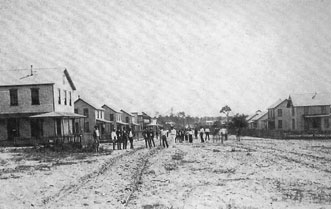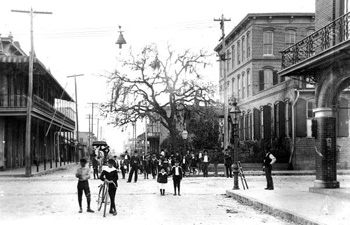This has been a wonderful month— complete with family visits, helping my daughter with her newborn and toddler— our precious granddaughters, as well as a month of connecting and getting to know a new cousin. What a joy it has been to help her with one of her genealogy projects, as well as co-labor on our mutual research of our family surnames.
The research continues, yet it begins on a deeper level.
The research continues, yet it begins on a deeper level.
As I mentioned in my last post, my knowledge about the country of Cuba, is limited.
I know it is located 90 miles south of Key West, Florida, and that only two generations in my family, my parents and grandparents, were born in Cuba. That's it!!
I know it is located 90 miles south of Key West, Florida, and that only two generations in my family, my parents and grandparents, were born in Cuba. That's it!!
All previous generations, migrated from either, the mainland of Spain or the Canary Islands.
Although, my DNA results do indicate a small piece of the pie with English, Irish and other European regions. What?!? Complete shocker, but for now, will have to put that on the back burner.
So, first on the list, Cuba.
In order to locate specific towns in Spain or the Canary Islands, I have to first, begin with Cuba, then work backwards from that point. I am aware of the challenges, and have my work cut out for me.
This leads me to...
Step 1— learn about Cuba and its cities and towns, and then,
Step 2— locate the local churches for those towns and locations where civil records would have taken place.
Step 1
Along the way, this will no doubt include learning about the historical time frames . As we all know the importance this plays, working together with our understanding in linking it all together with our information and weaving it into our historical accounts.
As I begin, I am discovering towns and provinces that have changed from one municipality to another or has been acquired into another province entirely.
In 2011, the municipality of San Antonio de los research
It is important to establish those dates and boundaries so we are notdisapointe d outcome when we research wrong locations expecting to find our target ancestor. So, to better understand, it is essential to study the geography and a bit of history for any country.
It is important to establish those dates and boundaries so we are not
During the colonization of Cuba, in 1879, the Spanish government created 6 Provinces, which are regarded as the “Historical Provinces”.
The Historical Provinces are:
1. Pinar Del Río.
2. La Habana: Included the Isle of Pines, and two current provinces, Artemisa, Mayabeque.
3. Matanzas.
4. Las Villas: Was once known as Santa Clara before 1940 and included three provinces of today— Cienfuegos, Villa Clara, Sancti Spiritus.
5. Camagüey: Known as Puerto Principe before1899, and included two current provinces— Ciego de Avila and part of Las Tunas prior to 1970.
6. Oriente: Prior to 1905, known as Santiago de Cuba. It included present day Provinces of Santiago de Cuba, Holguin, Granma, Las Tunas, and Guantanamo.
Today, there are 15 Provinces, 16 if you include Isla de la Juventud (Isle of Youth), which is actually, a “special municipality”. The last modification took place in 2010 and began functioning in 2011. The Provinces are further divided into 168 municipalities/towns.
Current Day (After 2011) Provinces:
Province Municip Cap City Found/Estab
Pinar Del Río 11 Pinar Del Río 1867
1Artemisa (2011) 11 Artemisa 1818
2Havana (Ciud de La Hab) 15 Havana 1515, 1592
3Matanzas 13 Matanzas (4)1572, 1693, 1695
5Cienfuegos 8 Cienfuegos 1819
Villa Clara 13 Santa Clara 1689, 1690
Sancti Spiritus 8 Sancti Spiritus 1514
6Cego de Avila (1976) 10 Ciego de Avila 1840
Camagüey 13 Camagüey 1528
Las Tunas 8 Las Tunas 1759
Granma 13 Bayamó 1513
Holguin 14 Holguin 1523
Santiago de Cuba 9 Santiago de Cuba 1515
Guantánamo 10 Guantánamo 1797
7Isla de la Juventud 1 Nueva Gerona 1802
Now, that I have a chart of the main Provinces, and the capital city within each province, I can create a list of the towns that my family and ancestors lived in and place them with the correct municipality and province.
Next, I will make a list of the Catholic Churches and Diocesis in each of those municipalities as well as addresses and contact information to begin the process of connecting the names and dates with their locations and begin to create a timeline for each ancestor.
Hopefully, at some point I will be able to trace the point of entry for a specific time in history for
This process can take a while, but through patience and persistence, we will prevail. :)
Have you had any success in locating records for your ancestors who immigrated to another country? Would love to hear about your research experiences, in particular of any stories involving Cuba, or similar countries.
Until next month.
__________________________________________________
Footnotes:
1One of 2 provinces (Artemisa, Mayabeque) created in 2011, from the former province of La Habana. Municipalities: Bahia Honda, Candelaria, San Cristóbal were originally part of the province— Pinar Del Río, prior to 2011. 2Municipality referred to as Ciudad de La Habana, La Habana, Havana.
3Subdivided into 14 municipalities, in 1976 until 2010. In 2011, Varadero was merged into the city of Cardenas, thus Matanzas, now has 13 municipalities.
4 Settled by Europeans: 1572, Founded: 1693, by 30 families from the Canary Islands, Established: 1695
5 Separated in 1976 from Santa Clara (known as Las Villa after 1940) which, was once a historical province in Cuba. The province of Santa Clara is
6Separated from the province of Camagüey in 1975.
7The 2nd largest Cuban island. Although it is listed as a province it is actually a Special Municipality of Cuba with 1 Municipality ‘Isla de la Juventud’
____________________________________________________
Sources
1. Information and photos courtesy of Wikipedia
2. For further reading









